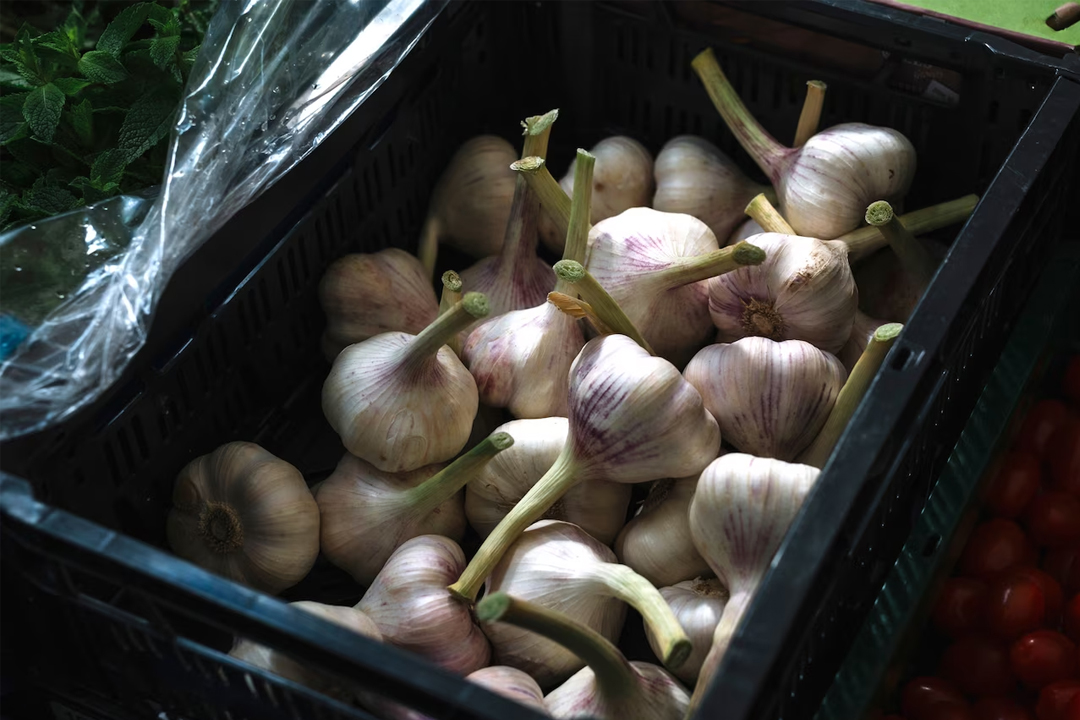
Choosing the Right Garlic Variety
Selecting the appropriate garlic variety is crucial for successful cultivation in Zambia’s specific climatic conditions. Key factors to consider include:
- Climate Adaptation: Zambia’s warm and humid climate necessitates garlic varieties that thrive in such environments. Varieties that exhibit resilience to high temperatures and humidity are ideal.
- Disease Resistance: Given the potential prevalence of certain garlic diseases in the region, selecting varieties with inherent resistance to these pathogens is paramount. This proactive measure can significantly reduce the risk of crop losses.
- Maturity Period: The garlic variety’s maturation time should align with Zambia’s planting and harvesting seasons. Careful consideration of this factor ensures optimal yield and quality.
Popular Garlic Varieties: While local conditions and specific agricultural practices may influence the best choice, some garlic varieties commonly cultivated in similar climates include:
- Creole Garlic: Renowned for its robust nature and ability to adapt to diverse growing conditions, Creole garlic is a strong contender for Zambian farms.
- California White: Producing large garlic bulbs with excellent storage qualities, this variety is favored for its commercial potential.
- Early Purple Stripe: This variety offers the advantage of early maturity, making it suitable for regions with specific planting windows. It is also often resistant to various garlic diseases.
Local Expertise: To make the most informed decision, consulting with local farmers or agricultural extension services is highly recommended. Their in-depth knowledge of regional conditions and successful garlic cultivation practices can provide invaluable guidance.
Combating Pests and Diseases
While garlic is relatively resistant to pests and diseases, vigilant monitoring and proactive measures are essential for safeguarding your crop.
Common Pests:
- Aphids: These tiny sap-sucking insects can infest garlic plants, weakening them and hindering growth.
- Management: Introducing natural predators like ladybugs or employing insecticidal soap solutions can effectively control aphid populations.
- Garlic Mites: These microscopic pests cause leaf distortion and reduce plant vigor.
- Prevention: Implementing crop rotation and maintaining strict hygiene practices in the cultivation area can help deter garlic mites.
Common Diseases:
- White Rot: This fungal disease attacks the garlic bulbs, leading to significant crop losses.
- Prevention: Employing crop rotation, avoiding waterlogged soil conditions, and diligently removing infected plant debris are crucial preventive measures.
- Garlic Rust: This fungal disease manifests as brown spots on garlic leaves, impacting plant health.
- Control: Selecting resistant garlic varieties and ensuring adequate air circulation around the plants can help mitigate garlic rust.
Organic Control Strategies:
- Crop Rotation: Alternating garlic with different crops in subsequent seasons disrupts the disease cycle and reduces pest populations.
- Resistant Varieties: Cultivating garlic varieties known for their resistance to common pests and diseases is a proactive approach.
- Hygienic Practices: Maintaining a clean cultivation area by removing plant debris and infected plants helps prevent disease spread.
- Beneficial Insects: Introducing natural enemies like ladybugs can help control pest populations without resorting to chemical interventions.
- Organic Fungicides: In severe cases, organic fungicides containing copper or sulfur can be applied as a last resort, strictly adhering to label instructions.
By carefully selecting garlic varieties, implementing sound pest and disease management practices, and seeking guidance from local experts, Zambian farmers can enhance their garlic cultivation success.
Organic Fungicides and Natural Pest Control
Organic Fungicides
While organic farming emphasizes prevention over cure, there are instances where organic fungicides might be necessary to combat severe fungal diseases affecting garlic. Here are some options:
- Copper-based fungicides: Copper oxychloride and Bordeaux mixture are common choices. These fungicides create a protective barrier on plant surfaces, inhibiting fungal spore germination. However, excessive use can build up in the soil and harm beneficial microorganisms.
- Sulfur-based fungicides: Sulfur-based fungicides, such as wettable sulfur, are effective against powdery mildew and other fungal diseases. They work by interfering with fungal metabolism. It’s essential to apply them according to label instructions, as high temperatures can cause phytotoxicity.
- Potassium bicarbonate: A less toxic alternative, potassium bicarbonate creates an alkaline environment unfavorable for fungal growth. It’s generally safe for plants and beneficial insects.
Natural Pest Control
A diverse ecosystem teeming with beneficial insects is a farmer’s best ally in pest management. Here are some strategies to encourage natural pest control:
- Habitat creation: Providing shelter and food sources for beneficial insects can attract them to your farm. This includes planting nectar-rich flowers, leaving undisturbed areas, and installing insect houses.
- Crop rotation: Alternating garlic with different crops disrupts pest life cycles and reduces their populations.
- Companion planting: Certain plants, such as chives, onions, and carrots, can repel pests or attract beneficial insects.
- Handpicking: For small-scale infestations, manually removing pests can be effective.
- Neem oil: Derived from the neem tree, neem oil is a versatile organic pesticide that disrupts insect hormones and feeding. It’s safe for beneficial insects when used correctly.
- Insecticidal soaps: These solutions suffocate soft-bodied insects like aphids. However, they have limited residual effect and might require repeated applications.
Additional Considerations
- Monitoring: Regular inspection of your garlic plants is crucial for early detection of pests and diseases.
- Prevention: Good sanitation, proper crop rotation, and maintaining optimal growing conditions are fundamental to preventing problems.
- Integrated Pest Management (IPM): Combining various control methods is often more effective than relying on a single approach.
- Local Resources: Seek advice from local farmers and extension services for region-specific recommendations.
By understanding the available options and implementing a holistic approach, you can effectively manage pests and diseases in your garlic crop while preserving the environment and promoting sustainable agriculture.


















